iMore Verdict
Bottom line: Keychron K2 V2 is a 75% layout board with 84 keys, including function keys with Mac legends. It connects with up to three devices via Bluetooth, or you can use it with the provided USB-C cable. You can switch between Windows/Android and Mac/iOS, or even cabled or wireless modes with the side switches. You get two angles with the kickstand, options of Gateron Red, Brown, or Blue, white or RGB backlights, and optional aluminum frame (RGB only) or PBT keycaps. The 4000mAh battery lasts up to 72 hours of typing or around 7-days of regular use.
Pros
- +
Small 75% layout with function keys (including Mac legends)
- +
Options for Gateron Red, Brown, or Blue switches
- +
Has white or RGB backlight options
- +
Two angles with the kickstand
- +
Bluetooth wireless connectivity up to three devices
- +
Includes durable braided 90-degree USB-C cable
Cons
- -
Case is tall, so wrist rest highly recommended
- -
Can be hard to find custom keycaps for specific keys (i.e., 1.75u right shift)
- -
Hard to see remaining battery life
- -
Aluminum is just exterior shell around plastic case
You can always trust iMore.
While a lot of Apple users probably opt for the Magic Keyboard or even Magic Keyboard alternatives, some of us prefer the clickity-clack of a mechanical keyboard, such as the Keychron K2 V2. Personally, I've always preferred the feel of a mechanical board over Apple's offerings, but I never jumped into the rabbit hole because it is a bit overwhelming. However, if you're a Mac user, then the Keychron K2 is a good starting point for the big and beautiful world of mechanical keyboards.
I have the Keychron K2 V2 with Gateron Brown switches in the aluminum frame with RGB backlight. You can also get the K2 V2 with a non-aluminum frame and white backlighting for slightly less. The aluminum frame only comes with the RGB, and the PBT keycaps are only available on the aluminum frame with RGB backlight for slightly more. This review will be covering the aluminum frame with RGB backlight version with Gateron Brown (tactile) switches.
Update September 30, 2020: Keychron has released a hot-swappable version of the K2 V2, and it starts at $79 for the white backlight with plastic frame, or $99 for the RGB with aluminum frame. You can still choose between Gateron Red, Brown, or Blue switches. Take a look at the best keyboards for Mac list also.
A nice introductory mechanical keyboard for Mac users
Keychron K2 V2: Features
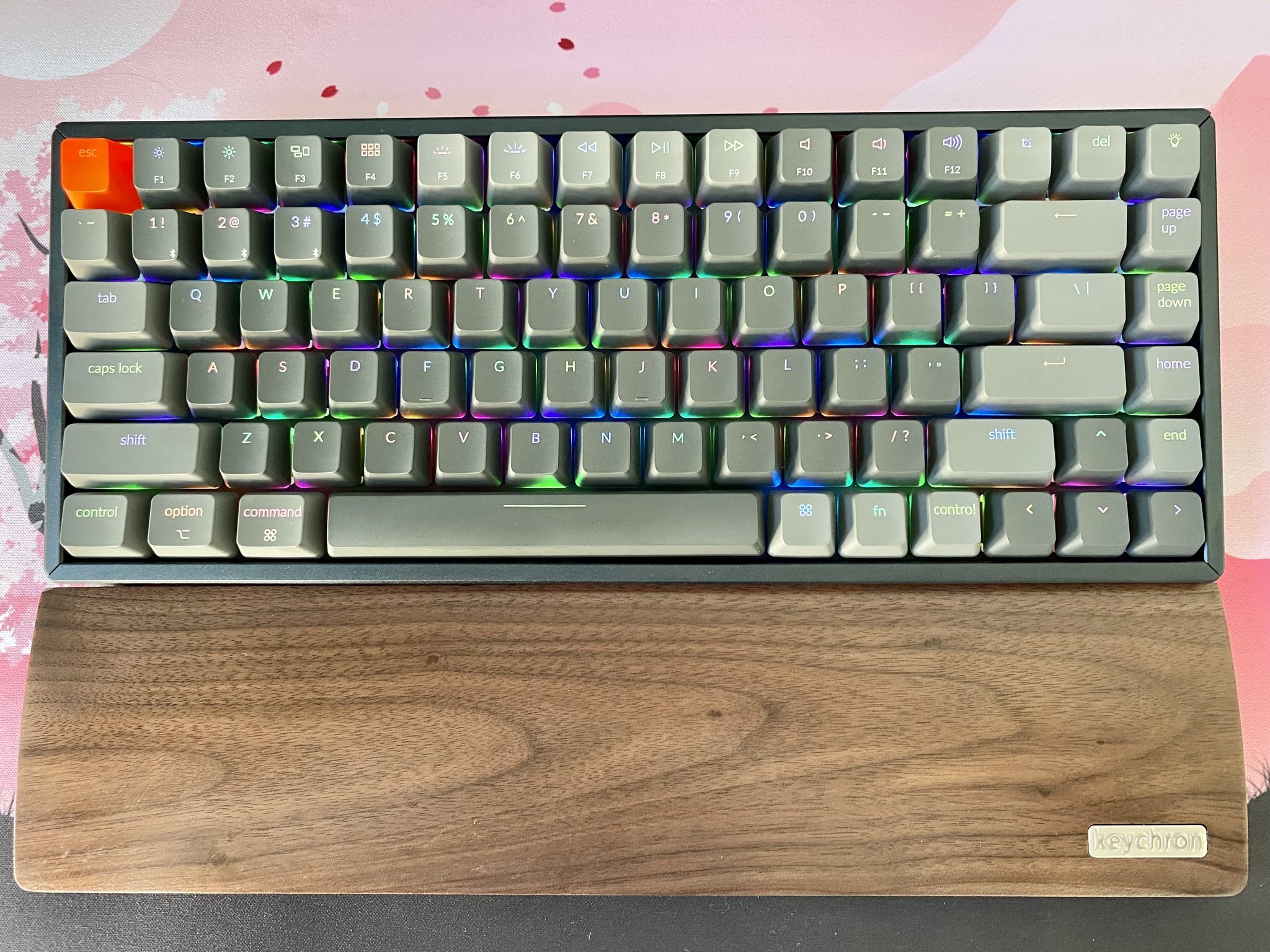
I'll start this off by stating that the Keychron K2 V2 is my first actual mechanical keyboard — I didn't even use the original K2 V1. Previously, I was using a Razer Ornata Chroma, which is a hybrid of membrane rubber domes and mechanical switches, but it's proprietary to Razer. So unlike actual mechanical keyboards, you can't exactly customize it with keycaps or even change switches.
But now that I have the Keychron K2, it's replaced my Razer as my full-time keyboard for work, and it's also my gateway into mechanical keyboards in general (goodbye, paycheck, I barely knew thee). And I love how affordable and accessible Keychron's products are.
A simple and clean design and build

The Keychron K2 V2 has a design that lines up with what you would expect from a mechanical keyboard — straight and flat edges on the frame, with slim bezels around the keys themselves. But since it's a 75% layout, it's smaller and more compact than others, making this an excellent option for traveling.
iMore offers spot-on advice and guidance from our team of experts, with decades of Apple device experience to lean on. Learn more with iMore!
Keychron K2 is a compact mechanical keyboard with Bluetooth wireless compatibility and geared for Mac users out-of-the-box.
The default gray ABS keycaps that it comes with (unless you get the PBT keycap version) are slightly curved, giving it a nice, tactile feel as you type. But keep in mind that ABS keycaps, in general, can wear down and get shiny over time — thankfully, you can easily replace the K2's keycaps with ease, and Keychron includes a wire keycap puller in the box (to replace the Mac keys with Windows if needed). Since the Keychron K2 uses Gateron switches, a clone of the Cherry MX, any keycap that fits a Cherry stem should work with the K2's Gaterons.
Since I have the aluminum frame, the K2 has a bit of heft to it, which I love. And thanks to the rubber feet on the bottom, it doesn't wobble or move around on my desk mat as I type away. While the bottom inclines about 9-degrees, there are two sets of kickstands on the bottom that provide additional typing angles.

On the left side of the frame, you'll have the USB-C port that you can plug into and use directly with your computer (USB-A) or charge up with. There are also tactile toggles to switch between Windows/Android and Mac/iOS modes, as well as whether you want to use the keyboard in wired or Bluetooth mode, or just turn it off completely.
Unfortunately, the Keychron K2 V2 sits a little bit high due to the frame. This means that it can be quite uncomfortable to type on unless you use a wrist rest. Keychron does sell its own wooden palm rest, but you can also use your existing one if you prefer (I liked using the one that came with my Razer Ornata Chroma, even though it's full size).
It's all about the clickity-clack switches and tactility
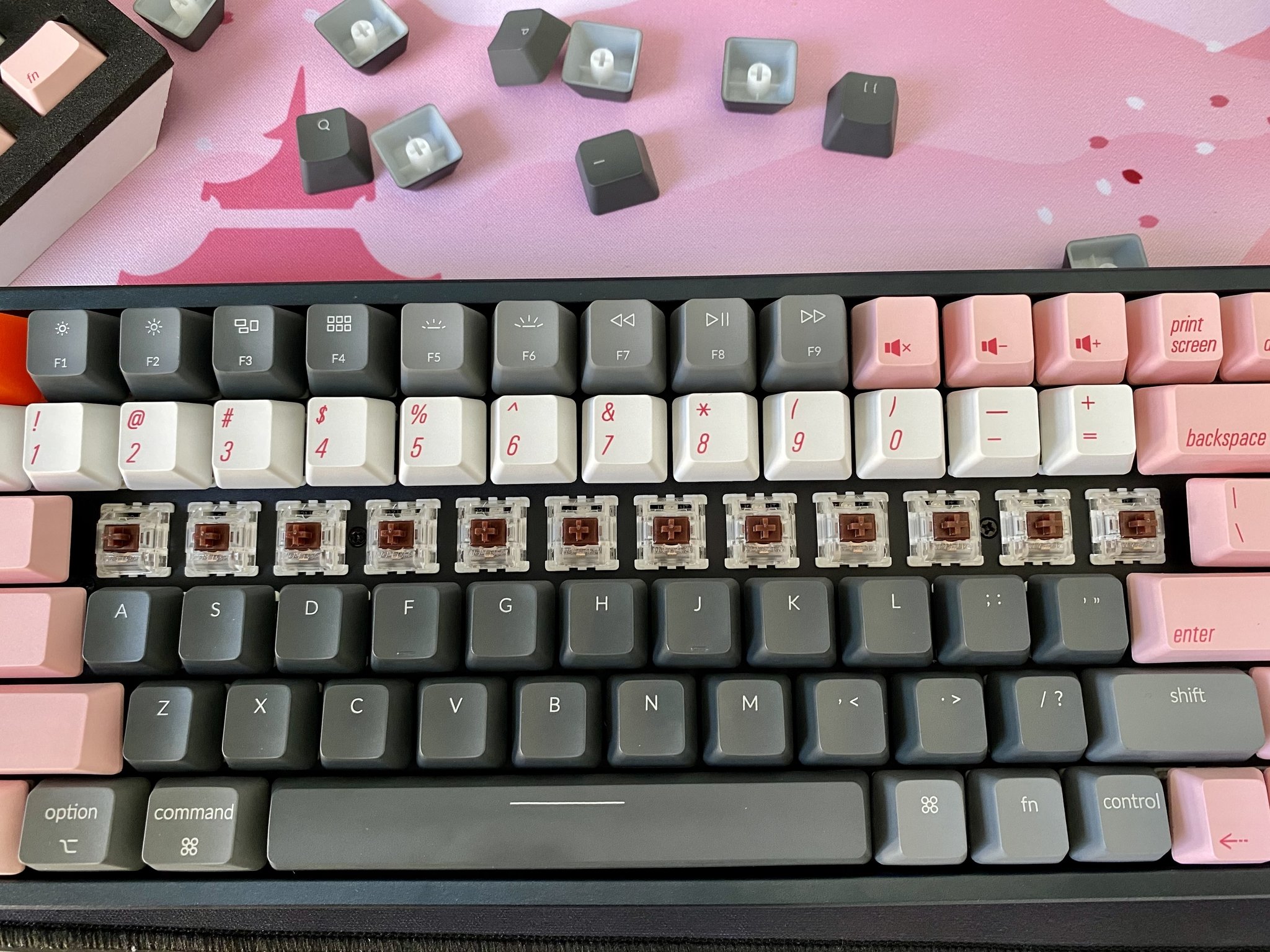
When it comes to mechanical keyboards, of course, it's all about the switches and how they feel. There are several different types of switches available out there, and what switches you have determine how each key feels and sounds when pressed. The original K2 had a slightly lower profile for the switches (3±0.5mm) than the K2 V2 (4±0.4mm), so there is a little bit more key travel on the updated version. I do not have the original K2, but this is from the information I found online from others who have had it.
The Keychron K2 V2 that I have arrived with Gateron Brown switches. Browns are a good middle ground between Reds, which are quiet, and Blues, which are loud and clicky. So while Blues require the most force and give you the full clicky feeling, the Browns provide a softer tactile bump without being too loud. If you need the quietest switches, then Reds are the way to go — these require the least amount of force and are linear, not tactile. Keychron has a video comparing the sound of the three switches, so you can determine which one fits your needs.
https://www.youtube.com/watch?v=3oW9O08QEmY
At first, I thought that the Browns felt a little "mushy" compared to my previous keyboard. However, like with any new keyboard, it takes time to get used to it. After a few weeks of using the Keychron K2 with Gateron Browns, I've grown accustomed to the feel and sound of it. But mechanical switches are very subjective, so I recommend listening to the switch comparison to get a feel for what you prefer.
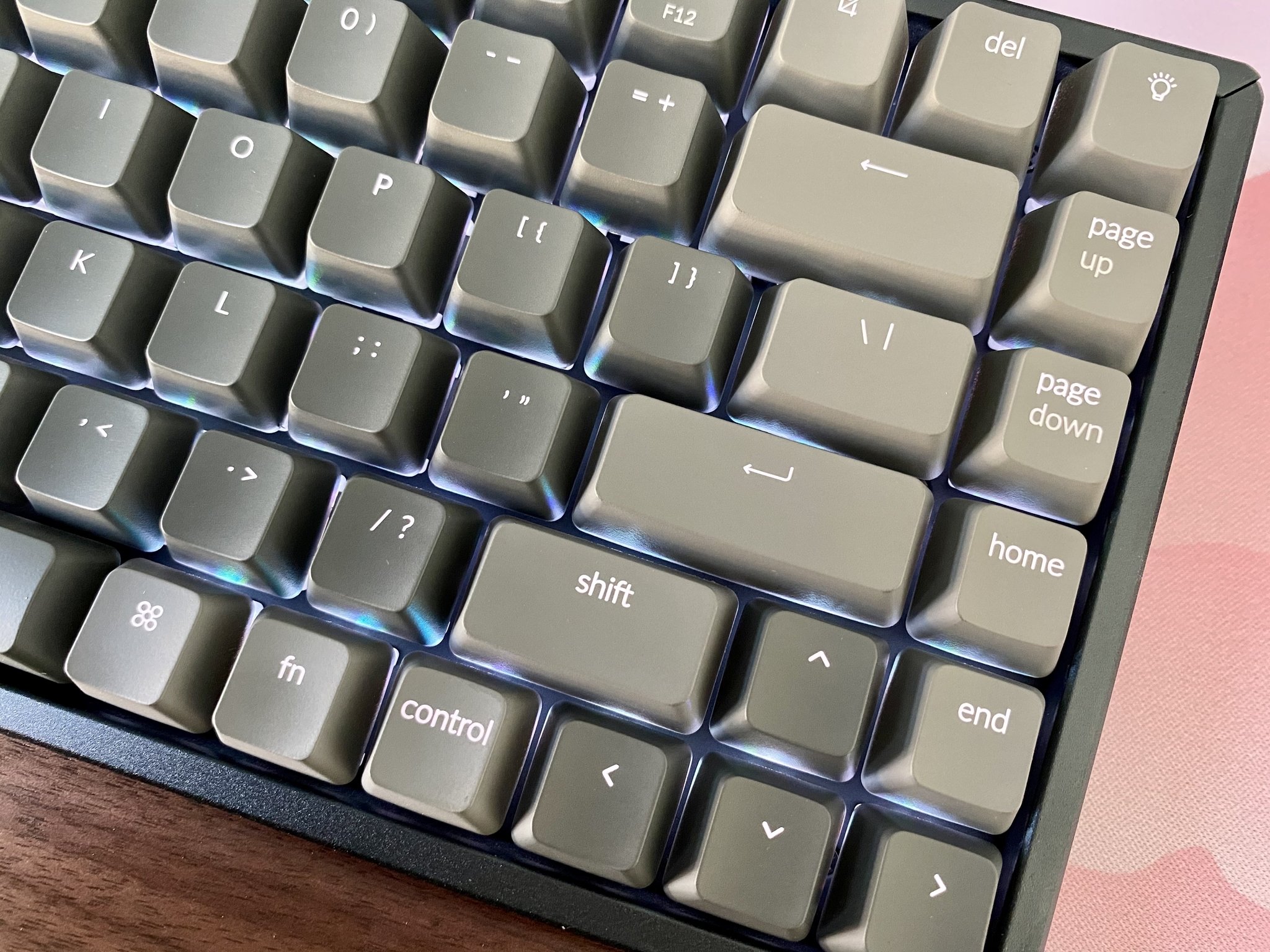
The default ABS keycaps that the K2 comes with are pretty nice — they have a slight curve to them, so it's comfortable to rest your fingers on. And for touch typists, the F and J keys have a marker on them to make it easy to identify without looking.
But if you are looking to change out your keycaps, whether you're replacing or customizing, then it's easy! Keychron includes a wire keycap puller in the box (primarily for switching out the Mac keys for Windows ones). And since Gateron switches are just clones of Cherry MX switches, any keycap with a Cherry MX stem (looks like a +) will work with your Keychron K2.
Unfortunately, this version of the K2 that I reviewed is not hot-swappable (you can't change out the switches without a soldering gun). Keychron just released a hot-swappable version, which you can purchase directly from Keychron, and it starts at $79.
Go wireless with Bluetooth and battery life
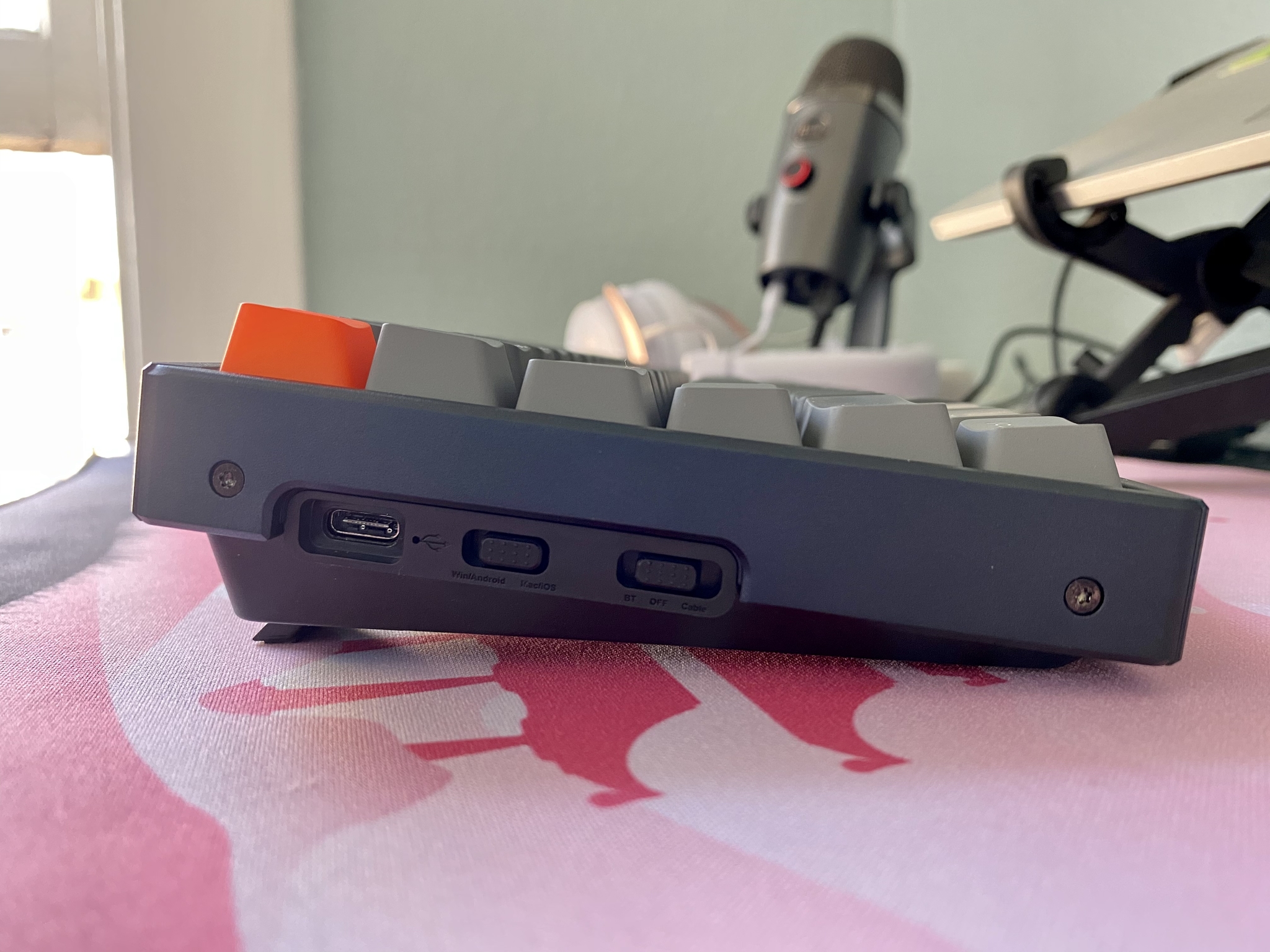
As I am diving into the world of mechanical keyboards, I have noticed that having wireless connectivity is still relatively rare, but not impossible. Keychron is one of the few that I've come across that can work wirelessly via Bluetooth, and it can even connect with up to three devices. If you want to use the Keychron K2 with your iPad Pro, you also have the option of using a USB-C-to-USB-C cable. The cable provided in the box is braided and very durable, and it also plugs in at a 90-degree angle.
If you choose to use multiple devices with the K2 wirelessly, switching between them is easy: all you need to do is press the "fn" key with the 1, 2, or 3 keys. And since the K2 has a 4000mAh battery inside (hence why it's a little tall), it can last for around 240 hours if there is no backlight, or around 72 hours if you're using a backlight or RGB effects.
While in wireless mode, the Keychron K2 goes to sleep automatically after around 10 minutes to save battery life. It may take a few seconds for the keyboard to wake up and reconnect via Bluetooth. You can disable this by pressing fn+S+O for three seconds, but doing so will exhaust the battery quicker.
Personally, I prefer to use the Keychron K2 in cabled mode at my desk whenever possible. The Bluetooth connection is stable, though, and the toggle on the side lets you seamlessly switch between cabled and wireless modes on the fly. But since I use it plugged in, the battery is always charged and ready to go when I decide to use it via Bluetooth.
Since there is no extra space on the keyboard itself, Keychron had to put the battery level indicator on the side, next to the USB-C port. When the battery level is below 15%, the small LED flashes rapidly, but it stays solid as you charge.
Light it up with RGB backlighting

Since I opted for the aluminum frame board, it has RGB backlighting by default. While I love RGB backlights in my keyboards, it's not for everyone — that's why Keychron sells a version of the K2 with standard white LED backlighting, but it isn't available with the aluminum frame option. However, the RGB version can light up just a white LED if you prefer, you just need to make sure it's on the solid color effect and cycle through the color options until you hit plain old white.
https://www.youtube.com/watch?v=TvevF8SVksg
There are 18 different RGB effects on the K2, which you can cycle through by pressing the lightbulb key in the upper right corner, or fn+right arrow key. If you have a particular effect that you're fond of, you can also lock it in by pressing fn+L+lightbulb for six seconds. This way, the effect won't change if you accidentally press the light key. To unlock, just press the keys again for another six seconds.
Of course, the RGB lighting isn't too noticeable during the day, but it really shines at night. The default keycaps are also shine-through, so the RGB will light up the legends on the keys, making it easy to type in a dark room.
RGB, whether you love it or hate it, is here to stay.
One of the few mechanical boards made for Mac/iOS

Since the Keychron K2 is my diving board into the pool of mechanicals, I have noticed that it is one of the few mechanical keyboards designed specifically for Mac and iOS users. That's because all of the keys in the function row have the legends printed on them, like how they appear on MacBook keyboards and Apple's Magic Keyboard, and they work as you'd expect right out of the box. This means you can adjust screen brightness, access Mission Control, and Launchpad, control media playback, and adjust volume natively, without having to change anything.
The problem arises when you want to customize, though. There is a severe lack of keycaps out there with the function row icon legends (you get F1-F12 printed out), so you'll either have to keep the default K2 Function keys on or learn to memorize them.
If you do need to use the K2 with a Windows or Android machine, Keychron includes Windows-specific caps in the box. Just make sure to remember to switch the side toggle to Windows/Android mode.
A nice balance of everything you'd want in a mechanical keyboard
Keychron K2 V2: What I Like

As my first mechanical keyboard, I think the K2 is solid. I enjoy the minimalistic design with my setup, and the switches and keys feel good to type on, at least with the Gateron Browns that I have. While the aluminum option isn't a fully aluminum case (it's a shell on the outside of the plastic case), it does add some nice heft and weight to the board, making it feel like a premium product at an affordable price point. Having two more incline options gives you more flexibility when it comes to getting a good typing angle.
I also love the RGB backlight effects — there are so many cool ones to choose from! Of course, if RGB isn't your thing, I appreciate that Keychron lets you get a solid white backlight on the RGB if that's what you prefer.
The best part about the K2 is that it can work wirelessly with multiple devices, and it has the Mac-centric function keys. These features aren't as common as I'd like in the mechanical keyboard world, so it's nice to have.
A wrist rest is a must
Keychron K2 V2: What I Don't Like
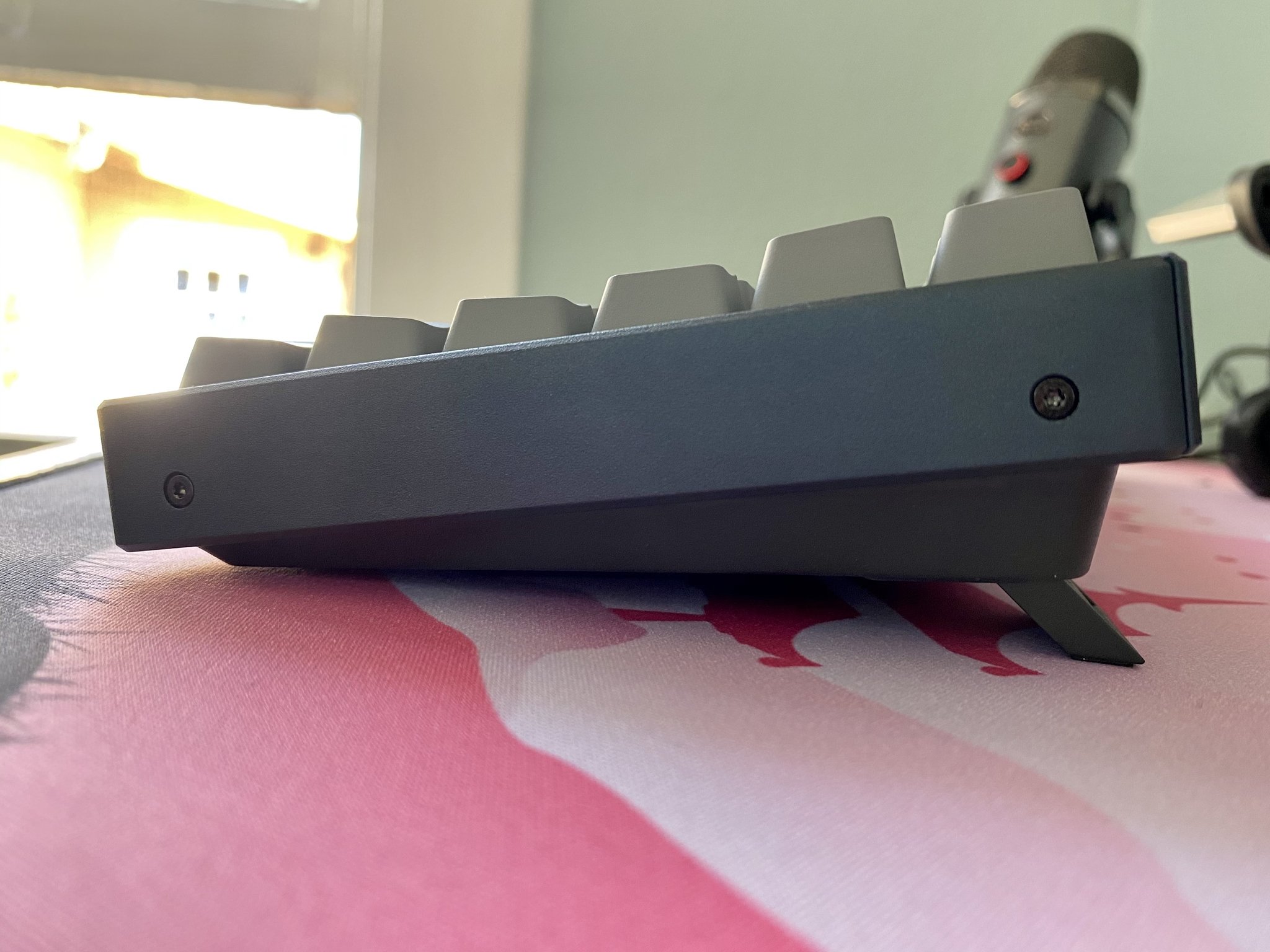
Keychron claims that the K2 V2 is not as high as the original version, and it also has a 9-degree incline by default (sans kickstand) to make typing more comfortable. However, I noticed that the case is still a little tall, and personally, I can't type on it for extended amounts of time comfortably. A wrist rest is a must with the Keychron K2. I liked using my previous wrist rest that came with the Razer Ornata Chroma, but it's a full size, so there was a lot of extra when using it with the K2. Keychron does sell a Walnut Wood Palm Rest for the K2, and it feels nice while adding some sophistication to your setup.
And while I'm used to it now, I wasn't originally a fan of the vertical column for the page up/down, home, and end keys. If you also don't like the vertical column of keys and prefer a more standard layout but still TKL (ten key less), then the Keychron K8 may be a better fit. Keychron also has several different keyboards if you prefer a different profile or layout size.
Also, if you are looking for keycap sets to customize your K2 with, you'll want to pay attention to the size of certain keys, like the right shift. That's because due to the layout size, some keys are smaller than standard sizes in sets. You may need to mix and match keycaps if you are striving for a complete theme.
A great Mac-centric mechanical keyboard
Keychron K2 V2: The Bottom Line
If you're an Apple user and want to get into mechanical keyboards, I think the Keychron K2 is a great starting point. The keyboard itself is minimalistic, the aluminum shell gives it a premium feel, you have several options for switches and backlighting, and the world of keycap customizing will open up. Plus, this is one of the few mechanical keyboards that is geared for Apple users, and it works wirelessly with multiple devices. Just make sure you have a wrist rest handy, because you're going to need it.
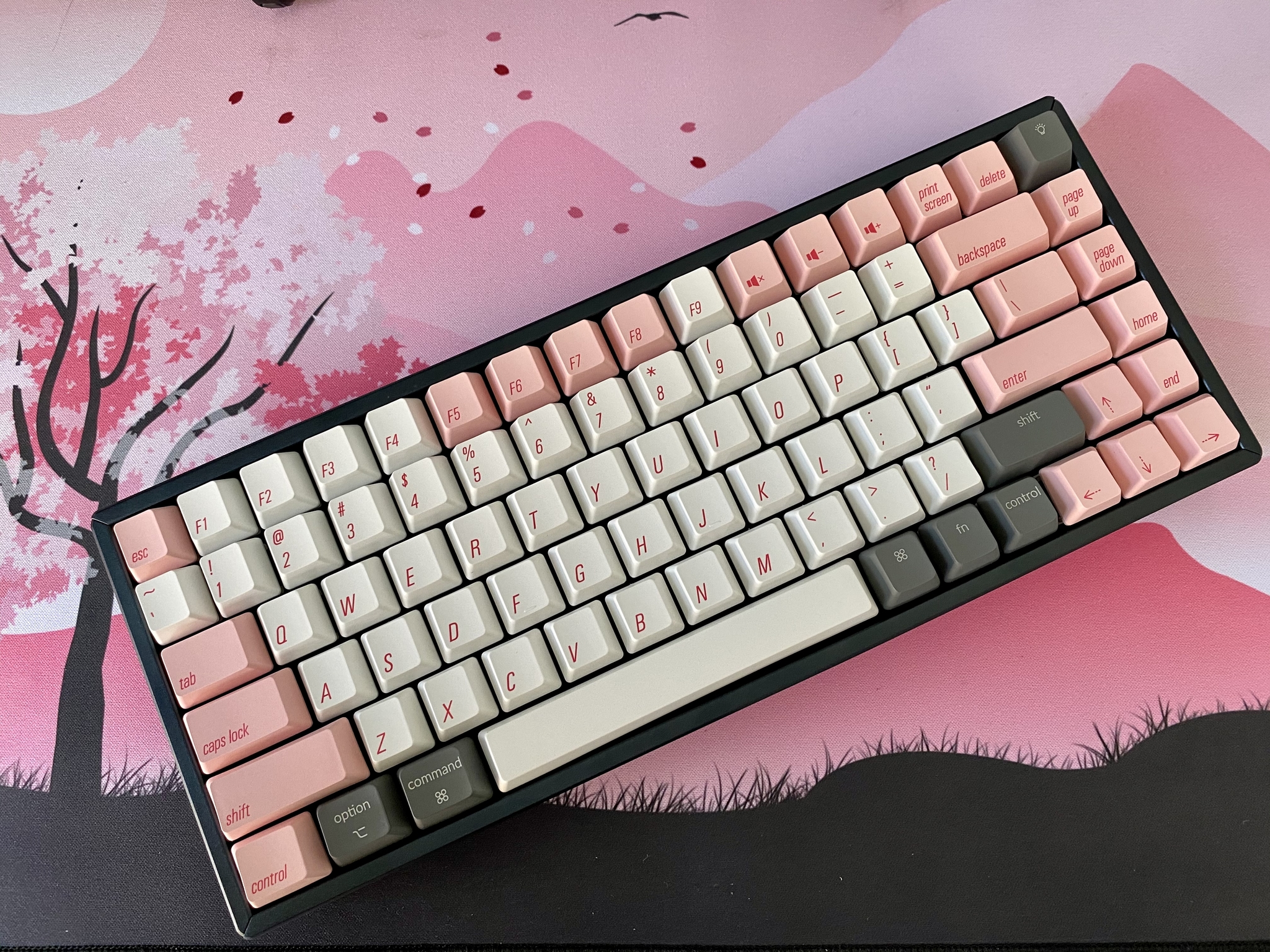

Bottom line: The Keychron K2 V2 is one of the few Mac-centric mechanical keyboards out there, and it works wirelessly. You can choose from Gateron Red, Brown, or Blue switches, which are compatible with Cherry MX keycaps, as well as white or RGB backlighting.
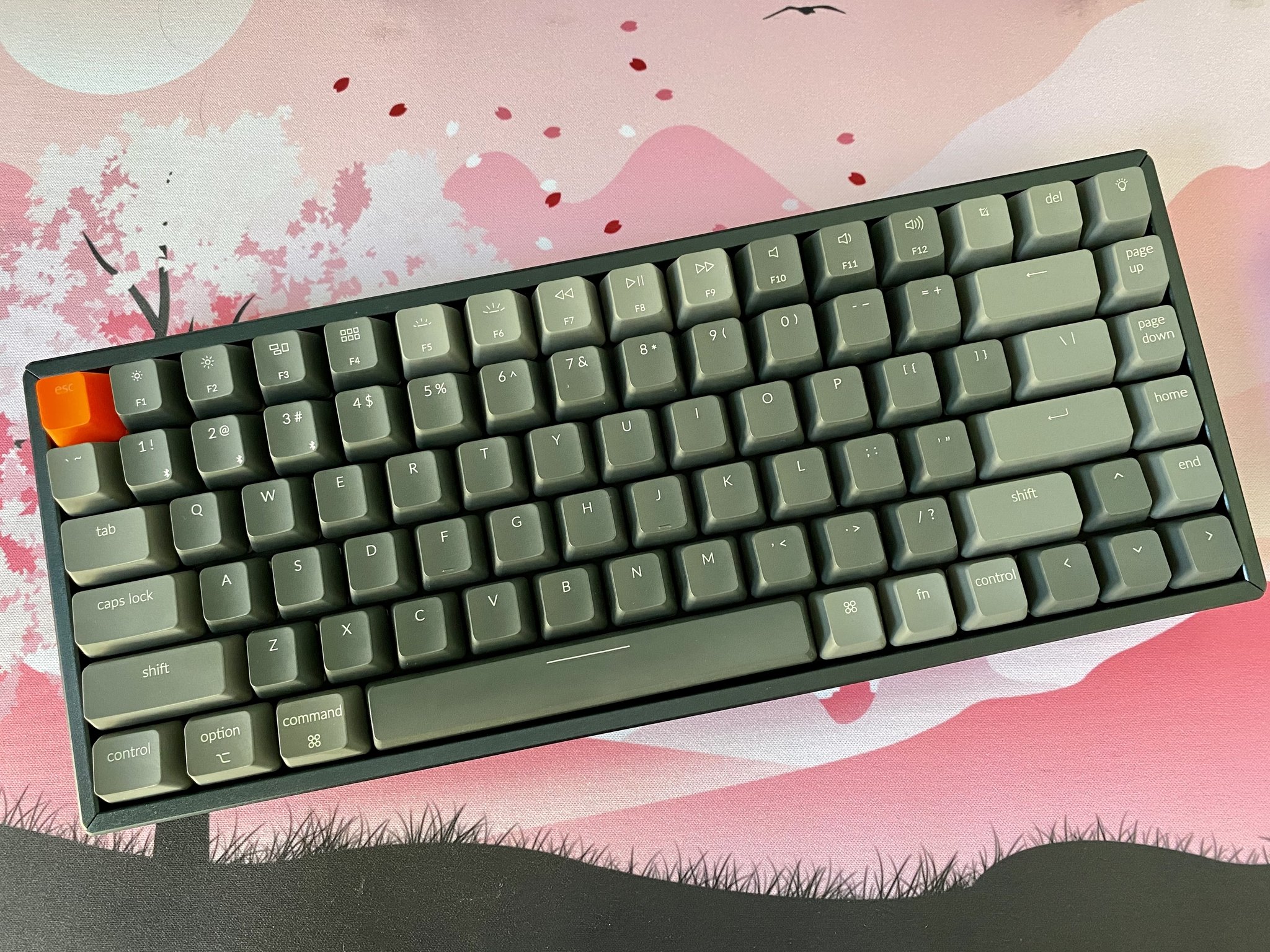





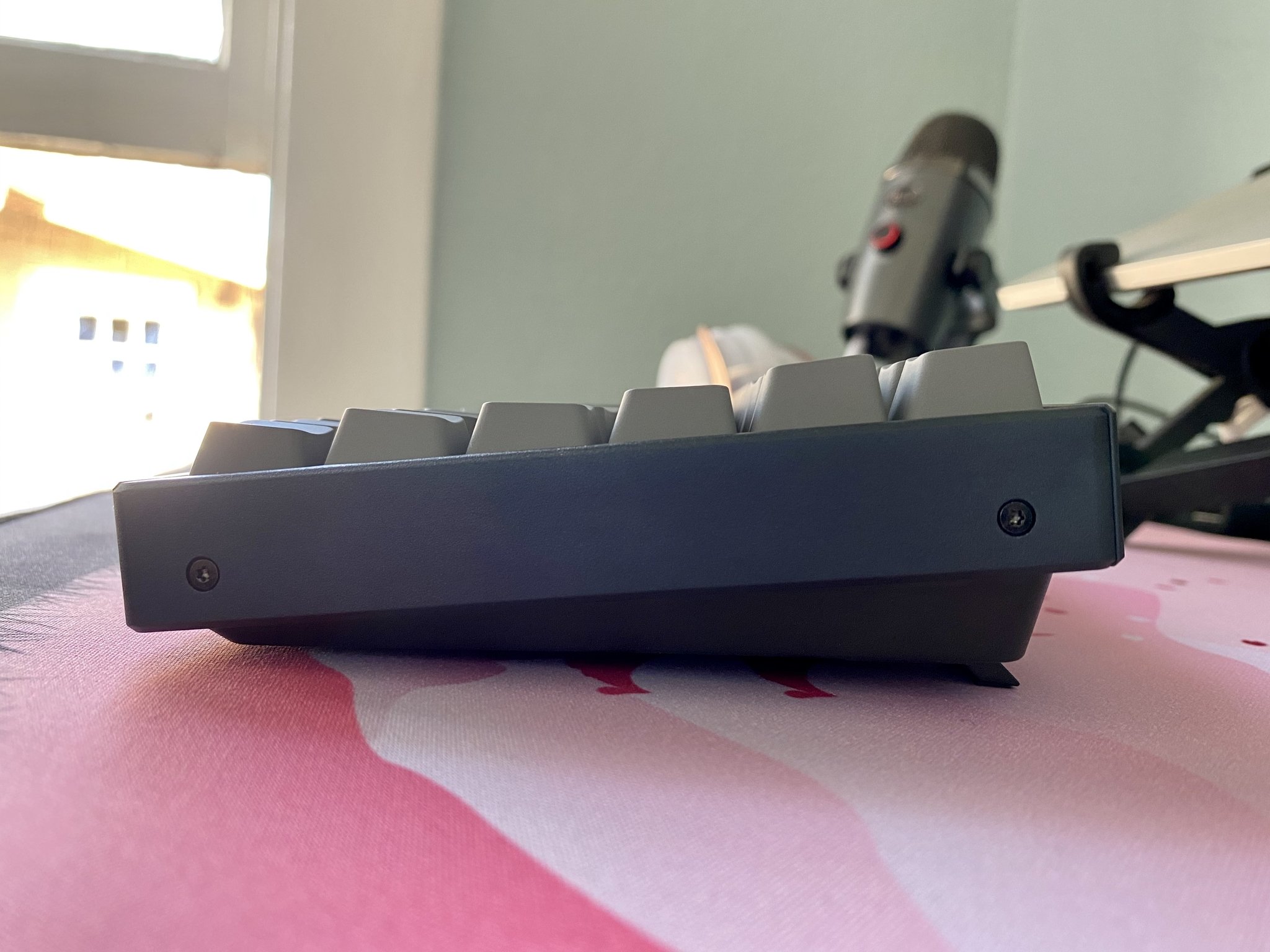






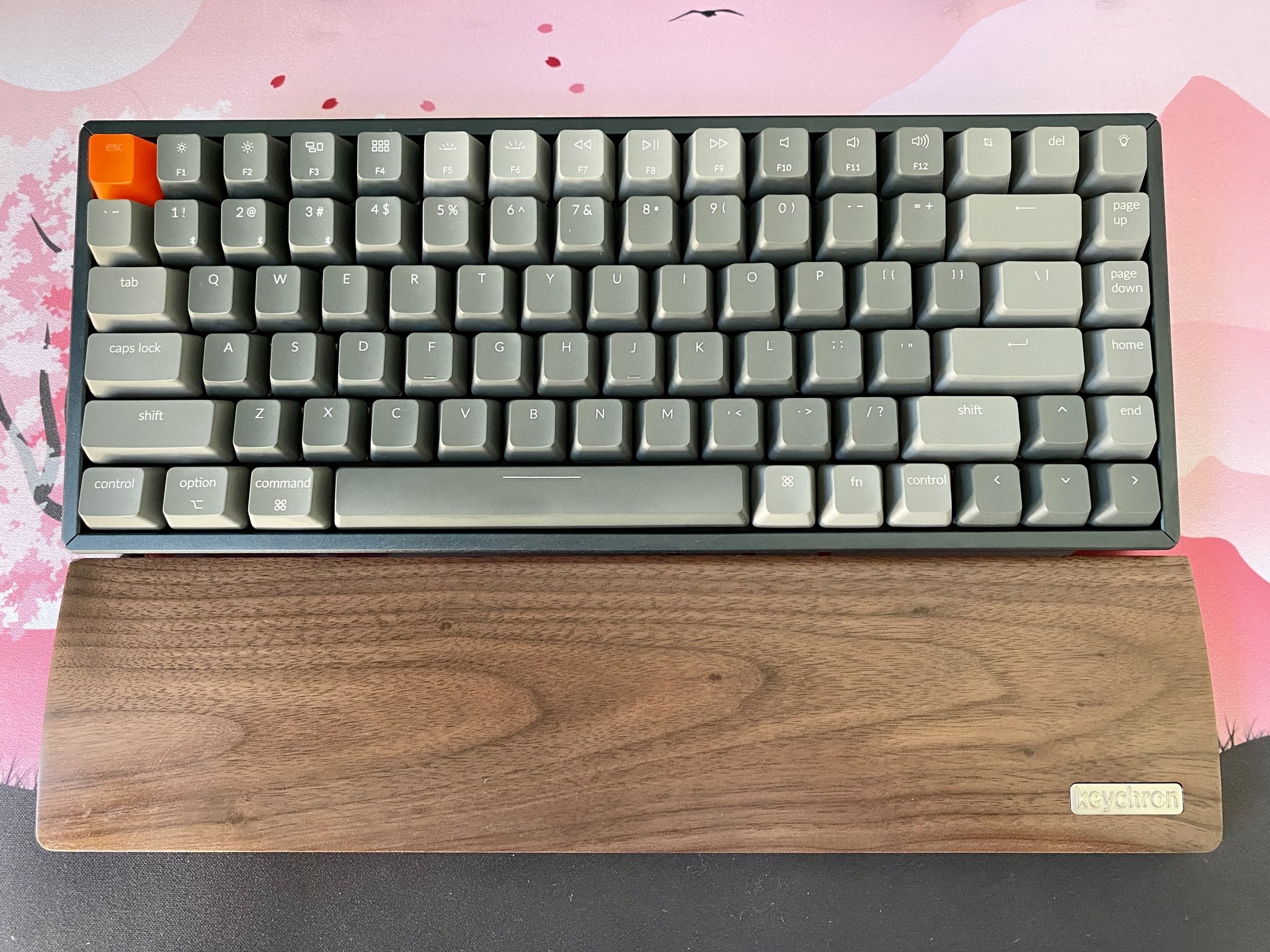


Christine Romero-Chan was formerly a Senior Editor for iMore. She has been writing about technology, specifically Apple, for over a decade at a variety of websites. She is currently part of the Digital Trends team, and has been using Apple’s smartphone since the original iPhone back in 2007. While her main speciality is the iPhone, she also covers Apple Watch, iPad, and Mac when needed.
When she isn’t writing about Apple, Christine can often be found at Disneyland in Anaheim, California, as she is a passholder and obsessed with all things Disney, especially Star Wars. Christine also enjoys coffee, food, photography, mechanical keyboards, and spending as much time with her new daughter as possible.
